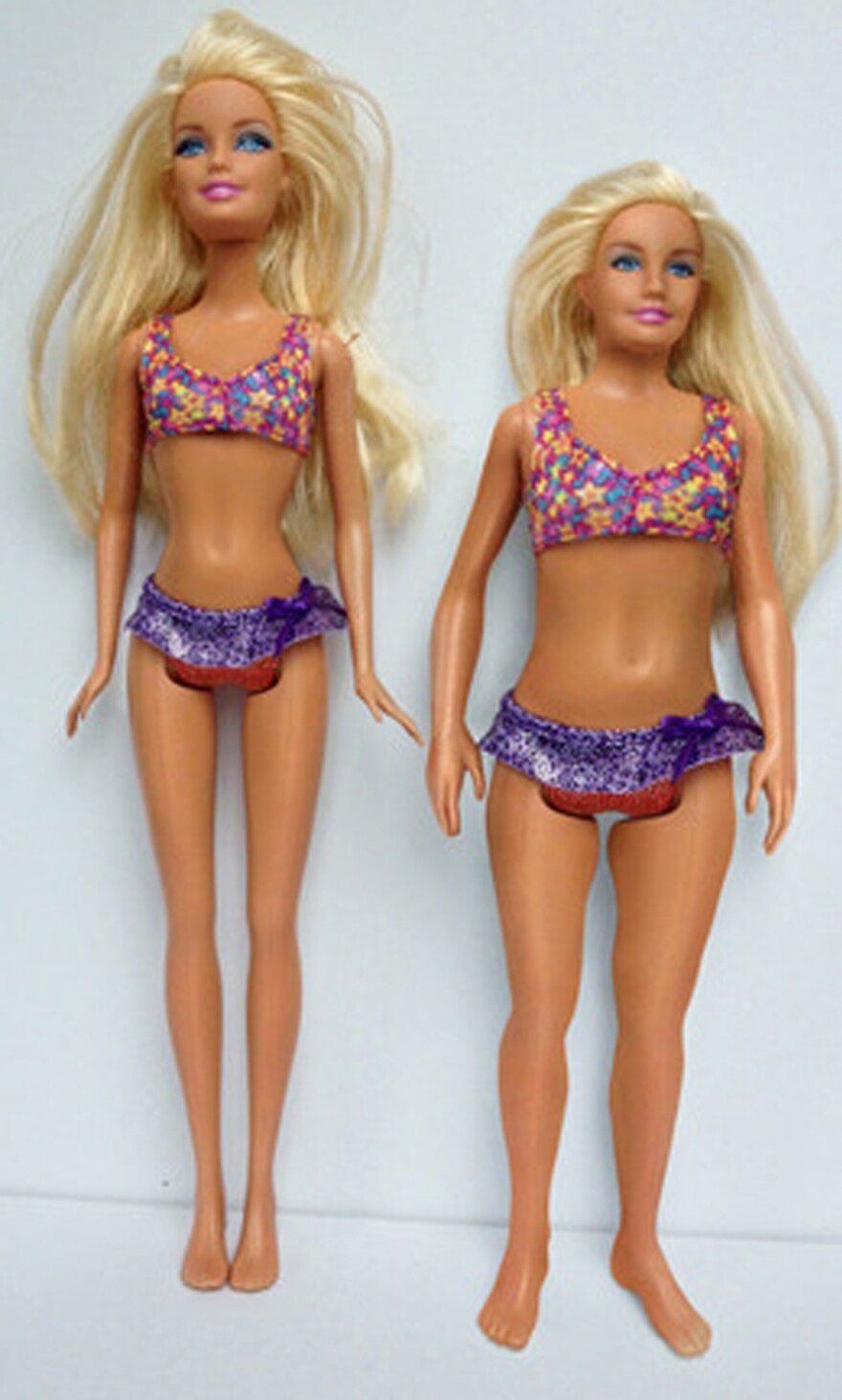For decades, the Barbie doll has been slammed by parents for promoting an unhealthy female body image. Playing with a Barbie doll for just a few minutes may cause girls to limit their career ambitions, psychologists reported last month.
So why do we keep offering girls bone-thin dolls like Barbie and the popular Monster High crew, asks artist Nickolay Lamm?

Barbie's proportionality was styled after a German sex toy. ... She's had some nips and tucks over the years so far. But the huge bust, skinny waist have stayed the same.
He thinks it's time for a Barbie to get real.

Lamm has raised nearly half a million dollars to produce a Barbie-like doll with the proportions of a real teenager. He designed the doll using the dimensions of the average 19-year-old, given by the Centers for Disease Control and Prevention.
"Then I smoothed out some of the details," Lamm, 25, tells Shots. "I just wanted her to look like a typical young woman walking down the street. But I left the actual dimensions ambiguous because I don't want to set a new standard."
Lamm says he was inspired to create the doll for his cousin. "She's so beautiful, but she was afraid to put on a bathing suit because she thought she was fat. And of course she's not," he says. "But then when I look at the dolls in the store [she has to select from], they're almost these mythical things."
To have Barbie's physique, the average young woman would need to grow about 5 inches, trim 17 inches from her waist and slim her neck by a half a foot, the artist says.
Here's the bad news for parents seeking healthier alternatives: Right now Lamm's doll exists only as a digital design. But he has been working with a former vice president at Mattel to construct a prototype. With the funds he raised, he's starting a company, Lammily, to produce the first edition of the dolls — which have already sold out.
Don't worry, though. Lamm wants to make a whole series of the dolls with a variety of ethnicities and healthy shapes. "I see there being a bunch of dolls to represent all of us," he says. He also plans for the dolls to wear less makeup than Mattel's Barbie and have more realistic clothes.
"I think the doll is fantastic!" says psychologist Aurora Sherman at Oregon State University, who led the recent study on Barbie's impact on girls' career ambitions.
Scads of studies have looked at how media images of unrealistic body shapes negatively affect girls' self-esteem and body satisfaction, Sherman says. But only a handful have focused on Barbie.
"From a scientific perspective, we don't know very much about how Barbie affects girls," she says. "Parents and philosophers have had a lot of opinions on Barbie, but there are very few studies that use Barbie in a scientific way. "
To start filling in that gap, Sherman and her colleagues ran a small study in which they gave 37 girls ages 4 to 7 a Barbie or a Mr. Potato Head to play with for five minutes. They then showed each girl photos of job situations, such as firefighting, piloting a plane or teaching. They asked each girl which jobs could be done by boys or by herself.
After playing with Barbie, the girls said that boys could do about 2.5 more jobs than themselves. But girls who played with Mr. Potato Head didn't distinguish between jobs for boys or themselves, Sherman and her colleagues reported in the journal Sex Roles.
Of course, with such a small study it's hard to draw conclusions about girls in general. "We don't know what 37 girls from around Corvallis, Ore., tell us about the billions of girls in the world," Sherman says. "But girls play with Barbie hours a day. That cumulative impact couldn't be smaller than what we saw."
It would be good to give girls and parents other options, Sherman says.
"Barbie's proportionality was styled after a German sex toy," she notes, "and it hasn't changed much in over five decades. She's had some nips and tucks over the years so far. But the huge bust, skinny waist have stayed the same."
Copyright 2021 NPR. To see more, visit https://www.npr.org.




